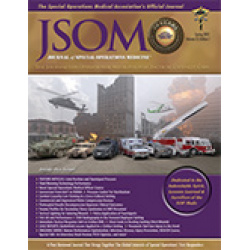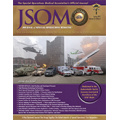Secondary Traumatic Stress in Emergency Services Systems (STRESS) Project: Quantifying Personal Trauma Profiles for Secondary Stress Syndromes in Emergency Medical Services Personnel With Prior Military Service
Renkiewicz GK, Hubble MW 21(1). 55 - 64 (Journal Article)
Background: EMS personnel are often exposed to traumatic material during their duties. It is unknown how prior military experience affects the presence of stress in EMS personnel. Methods: This was a prospective cross-sectional study. Nine EMS agencies provided data on call mix, while individuals were recruited during training evolutions. The survey evaluated sociodemographic factors and the relationship between childhood trauma and previous military service using the Adverse Childhood Experiences questionnaire, Life Events Checklist DSM-5, and Military History Questionnaire. Descriptive statistics calculated personal trauma profiles, comparing civilian EMS personnel to those with prior service. Hierarchical linear regression assessed the predictive utility of military history to scores on the Impact of Events Scale-Revised. Results: A total of 765 EMS personnel participated in the study; 52.8% were male, 11.4% were minorities, and 11.6% had prior military service. A total of 64.4% of civilian EMS providers had any stress syndrome, while that number was 71.8% in those with prior military service. Hierarchical linear regression identified that years of service and the performance of combat patrols or other dangerous duty accounted for a unique criterion variance in the regression model. Conclusions: Prior military service or combat deployments alone do not contribute to the presence of stress syndromes. However, performance of combat patrols or other dangerous duties while deployed was a contributing factor. These results must be interpreted holistically, as other factors contribute to the presence of vicarious trauma (VT) in EMS personnel who are also veterans.


 Español
Español 




